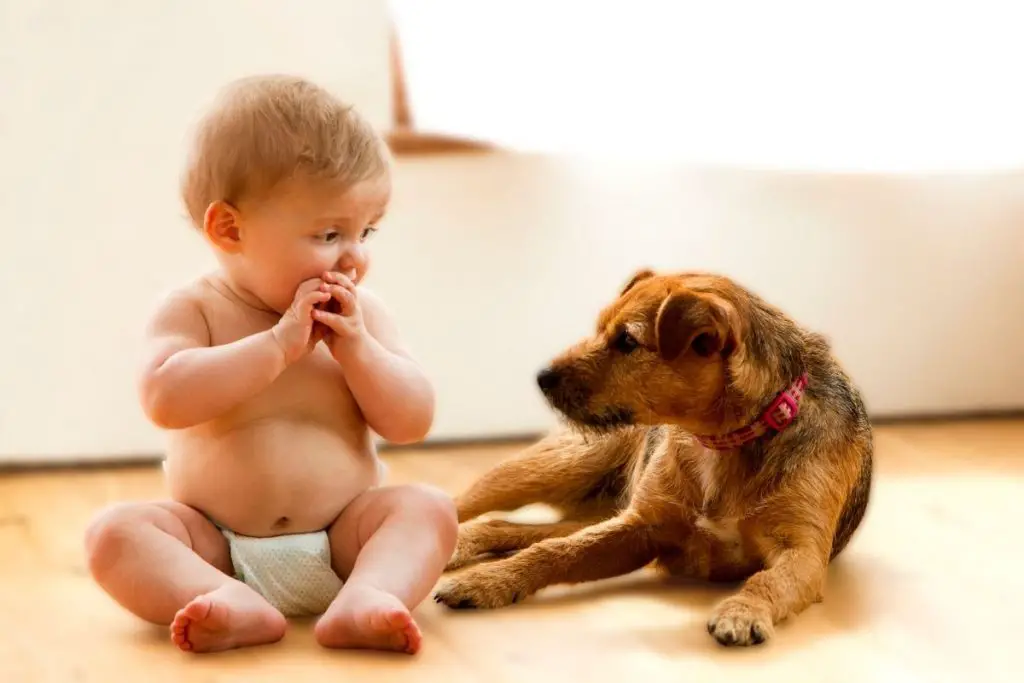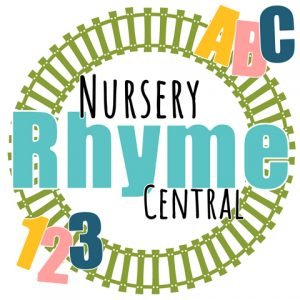Many popular children’s songs and stories are about animals and the sounds they make. Children respond to these happily and love participating by making animal sounds. But is it helpful to encourage animal sounds in terms of speech development? Do animal sounds count as words?
Animal sounds do count as words as babies learn to talk. Any sound or sign counts as a word if the child can consistently, intentionally, and independently associate a specific sound or sign with a specific concept. Learning animal sounds is beneficial for babies’ cognitive and language development.
Besides children enjoying animal sounds, teaching animal names and sounds can form part of language and cognitive development. But why exactly should you count animal sounds as words and what should you expect from a baby or toddler? When are animal sounds appropriate for learning and at what age?

The difference between sounds and words
From birth, babies can make sounds of all kinds. However, these sounds are not regarded as coherent speech or words until a child can consistently link a specific sound to a concept. Random sounds and noises do not count as words. In other words, a baby babbling ‘ba ba ba’ is just a sound the baby has discovered they can make. Until the baby associates’ ba’ with a ball or another baby or banana for instance and uses the word ‘ba’ –
- consistently: regularly and later every time he or she sees the ball or another ball
- intentionally: in the context that ‘ba’ refers to a ball and not to a truck or dog, and later that ‘ba’ can be all balls
- independently: not only in imitation or randomly making the sound ‘ba’ and on his or her own.
If these conditions are fulfilled, you can say that ‘ba’ is the baby’s word for a ball, and the baby can be regarded as beginning to talk. Although not pronounced clearly or perfectly at this stage, ‘ba’ meaning ‘ball’ is known as a word approximation, which is a normal part of speech and language development.
Animal sounds as words
If your baby uses animal sounds to refer to a specific concept consistently, intentionally, and independently, he or she is using animal sounds as words. For example, if a baby says ‘meow’ every time a cat appears or a picture of a cat is shown, ‘meow’ is a particular sound associated with a particular concept and is the baby’s word for ‘cat’. Or you may ask the baby, ‘What does the cat say?’ and if the answer is ‘Meow’, then your baby has used a word.
What counts as a word?
The following all count as ‘words’ for babies:
- Actual words: mama, dada, up
- Word approximations: ba (ball), dodo (dog)
- Animal sounds: woof, moo
- Exclamations: wow, whoa, uh-oh
- Signs or gestures: to show something is finished, that he or she wants to be picked up
Teaching babies animal sounds
There are several reasons to teach babies the sounds animals make. First, animal sounds are lots of fun and tend to make babies laugh. Second, animal sounds and names use many of the first linguistic sounds babies learn to make: consonants like b, m, t, n; and vowel sounds like o, and a are easy for babies to form. Joining these sounds together creates simple words for babies to learn and use as building blocks to create other words.
Once babies know animal sounds, they can learn animals’ names and put the sounds and animals together to make simple sentences: ‘cow moo’.
When should babies be able to imitate animal sounds?
Babies can imitate sounds from when they are tiny, around six to nine months. However, they may merely echo sounds at this stage, not knowing what they mean or associating them with an animal – although this conceptualization is beginning.
You can begin introducing babies to animal sounds from this age, through reading stories, singing, and playing animal songs, for example, ‘Old MacDonald had a farm’.
When should babies recognize and say animal sounds?
By the age of a year, babies begin saying their first words. If they have been taught animal sounds, ‘baa’ or ‘moo’ for example may be some of the words a baby knows. By the age of two, most toddlers can say some animal sounds and associate them with the right animal.
Books remain very important in teaching children about animals and their sounds at this age, for example, ‘The animals of Farmer Jones’. Children will also enjoy simple matching games and playing with toy animals.
When can babies identify animals?
Babies of one to two years (if they have been taught or had many experiences with and about animals) will be able to identify animals from their sounds and point them out correctly in pictures.
Children can begin to take a more active role at storytime, answer questions about the story, and point out characters and animals. They will love participating in stories, especially making animal sounds or repeating simple choral story elements. They will also start enjoying television shows about animals.
How language develops in babies
Understanding when your baby will enjoy, respond to, and make animal sounds is easier if you know how language develops in babies.
By the end of their first year of life, a baby should be able to say a couple of words. However, speech and language development begin from a very young age. Your baby’s language development should broadly follow these milestones. (Remember that each baby develops at a different pace, and these are only guidelines showing the expected range, which is highly variable.)
Birth to two months
The first sounds babies make are crying, and whimpering sounds, straightforward (and usually successful!) attempts to communicate discomfort, such as hunger, cold, or discomfort.
By eight weeks, babies can smile to show pleasure, satisfaction, and recognition. They will also have begun making cooing noises – ‘oo’ and ‘aah’.
Babies will already distinguish between different people’s voices and between people’s voices and animal sounds.
Two to four months
By sixteen weeks, babies can laugh and gurgle spontaneously.
They can distinguish different sounds by watching the sound’s formation by lips and trying to imitate lip shape and movement, but cannot replicate the sounds themselves.
Four to nine months
By six months, most babies will turn to look at you when you are speaking. Many babies of this age will respond to their names and tone of voice.
In addition to crying, laughing, and cooing, babies now begin babbling. The babbling phase is an important one, where babies start to repeat syllables such as ‘ba ba ba’ or ‘ma ma ma ma’. Babbling consists of repeating these sounds without meaning. Parents are often excited as babbling sounds like the baby attempting to say ‘mama’ or ‘dada’. Encouraging your baby to associate these sounds with the person does lead to the baby saying ‘mama’ and ‘dada’ as early words.
During this phase of language development, babies begin imitating and repeating sounds you make or words you say to them. Usually, these are sounds only and not words. However, this is the beginning of speech.
Babbling is followed by nonsense speech, where it sounds like the baby is talking, but the sounds are random and have no meaning.
Ten to fifteen months
By around a year old, most babies can say a couple of words and want to make themselves understood. Babies use gestures as well as words to communicate, such as lifting their arms to show that they want to be picked up.
Their receptive understanding of language is more developed than their expressive or active ability to speak, though. Babies of this age can understand and follow simple instructions, respond to simple questions, and understand ‘no’ (although they may obey and then carry on doing whatever they were doing before!). Babies of this age will also want to learn more words, so they will often point to things for you to name.
Sixteen months to two years
This period marks a language explosion in children, as their vocabulary increases rapidly. Babies now begin putting words together to form two-word and then three-word sentences.
What if my child isn’t meeting these milestones?
Although you should see your child learn more and more words especially during the sixteen months to two years stage, don’t be alarmed if they are not stringing together more than three to five words until age three.
Having four children I have experienced extremely different language acquisition in my children with my eldest reaching many of these milestones earlier than stated, but having my second child only start to really say more than three words in a row until he turned three! Both children speak, read and write extremely well today, but couldn’t have had more different routes to naturally developing their language skills! I did find however that my second child developed other skills such as crawling, walking, and climbing earlier than my eldest and so in my experience I found even with my other children that sometimes children focus on one area of growth more than another but that eventually it all evens out. So if your child is not where this articles states learning could be at a certain age, take a whole child perspective and look at the other areas in your childs development that are blossoming and know that eventually your child will get there. But of course if you have any concerns, make sure you take your child to your local health center or peadiatrician for expert advice.
So are Animal Sounds important in children’s language development?
Animal sounds are important words for children to learn as they help develop the basics of word formation and develop cognitive relationships between things such as animals and the words or sounds we attach to them. Teaching children simple animal sounds is fun and plays an essential part in linguistic development. Children may be able to imitate animal sounds as early as eight months old, be able to use animal sounds as words by a year, and create short sentences – moo cow – using the animals and their sounds by two years.
